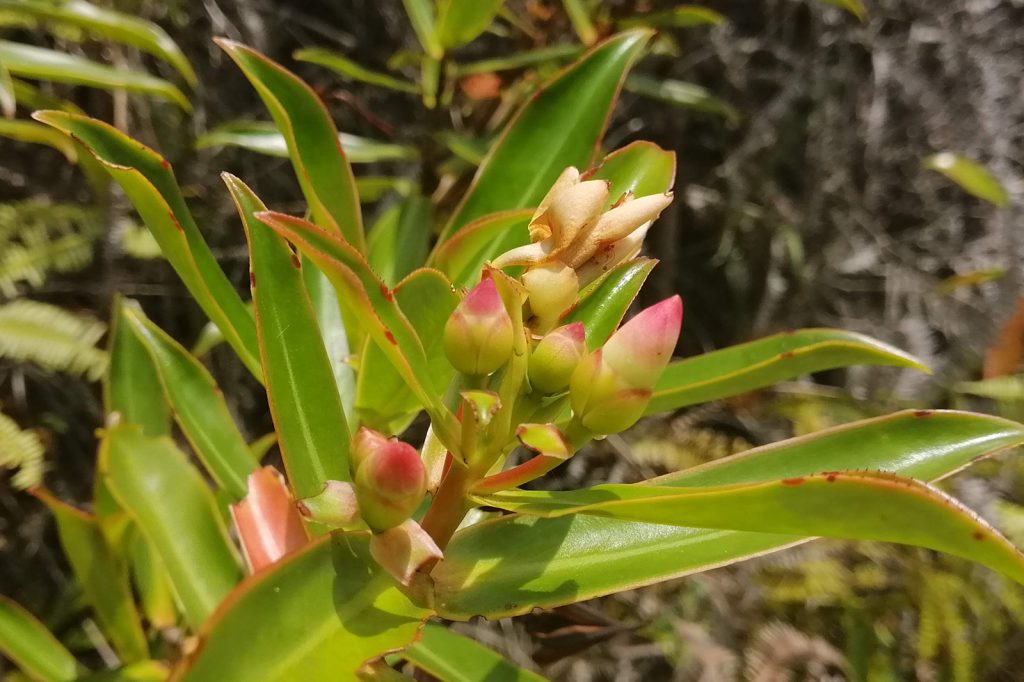This pretty shrub can grow into a small-sized, upright tree. It is highly adaptable, able to grow in freshwater swamps and marshland, reservoir and stream edges, secondary forests, degraded land, and even on mountain tops. Its range is in Southeast Asia.
It has very pretty pink-tinged white, five-petalled, Sakura-like flowers, and glossy red-edged leaves. But surprisingly, this plant is rarely grown in gardens.
Its hard and dense wood is durable (kuat means strong) and used for construction. A tonic tea made from this plant is drunk after childbirth. A decoction of its leaves and roots may be taken for stomachache.
Natural phyto-chemical extracts from this species have been found to be effective in controlling the Aedes mosquito.
In Singapore, this plant is common only in certain localities. No one seems to know why the Malay people named it the Cicada Tree, but cicadas have indeed been seen perching and singing on this tree.
the freshwater swamp forest eco-system
The freshwater swamp forest is a waterlogged ecosystem, usually flooded during the rainy season. This specialised habitat occurs along rivers or around freshwater lakes.
The water quality in freshwater swamps is normally highly acidic due to a build up of organic matter which does not decompose well in waterlogged conditions. The water is therefore the colour of thick tea.
A diversity of flora and fauna has evolved to adapt to this unique kind of ecosystem, and many species may be found no where else. In Singapore, freshwater swamp forests still exist, but only in certain parts of the Central Catchment nature reserves.

Buds of the Cicada Tree. 
A Cicada Tree (Ploiarium alternifolium) stands tall in the wild. 
Cicada Trees flourishing in the wild on an island of the Riau Archipelago.




